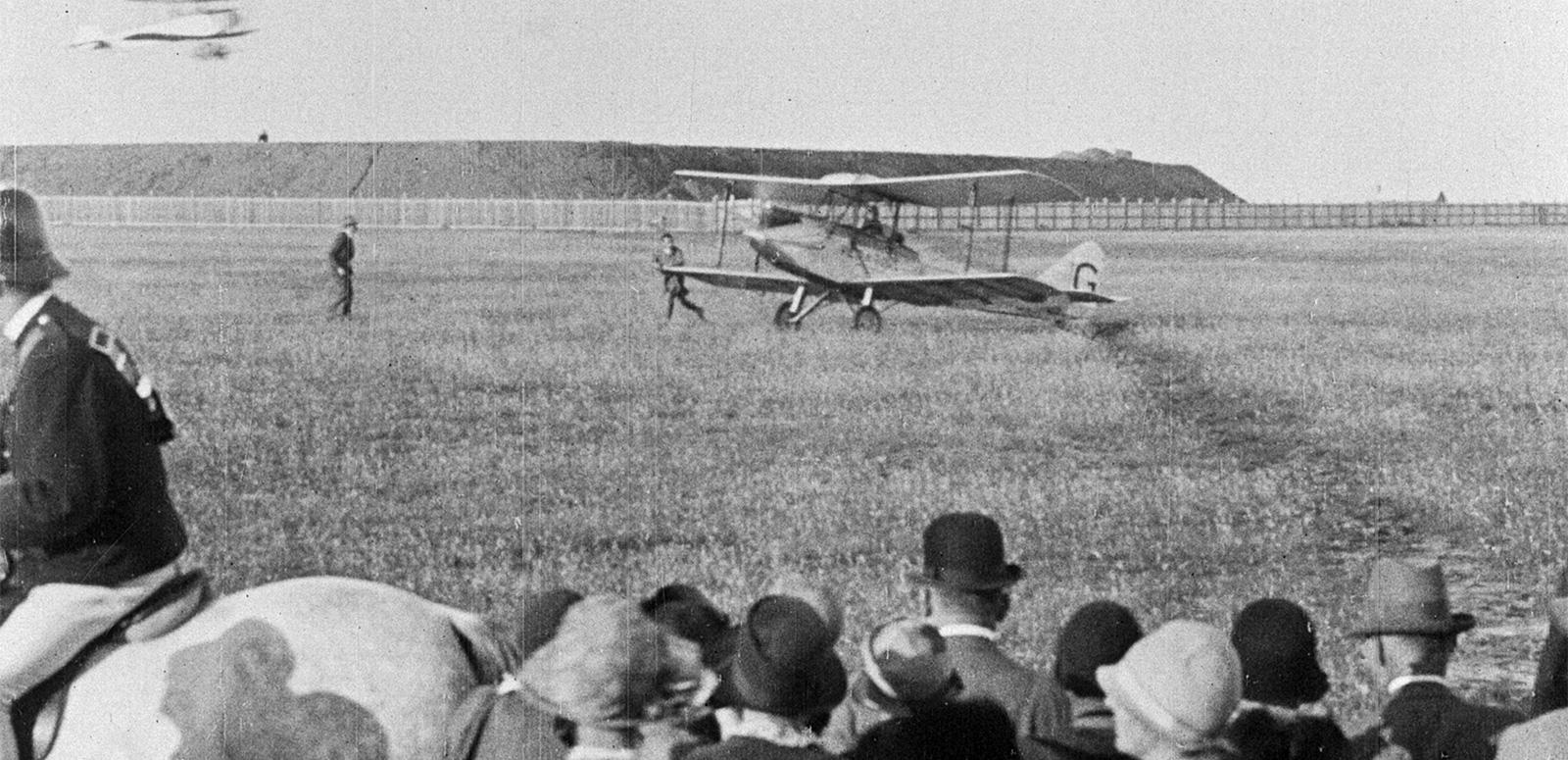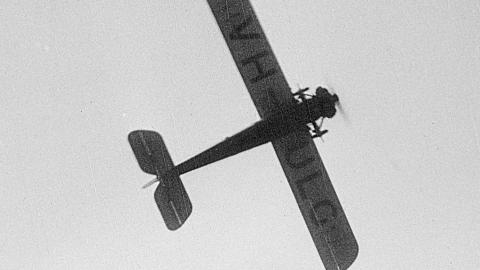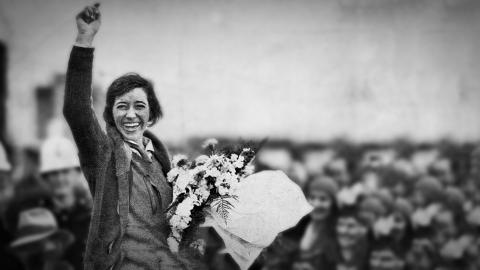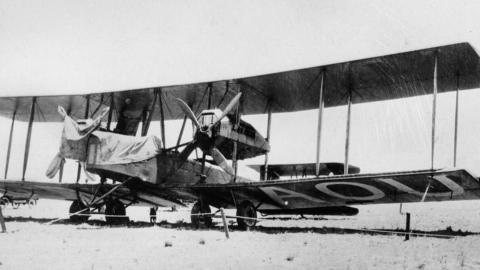

Famous Australian aviators
Our new Early Aviators curated collection captures the excitement and wonder of the new aeroplane technology of the early 20th century, as it pushed the boundaries of transportation and brought Australia closer to the world.
Continental crossings
Ninety years ago, on 15 April 1928, Australian aviator Hubert Wilkins and Canadian pilot Ben Eielson flew their Lockheed Vega over the Arctic from Alaska to Norway, without the aid of a compass (which was unreliable because of the proximity to the North Pole).
The 20-hour journey was the first trans-Arctic flight, taking place over largely unexplored territory. Both men then headed to Antarctica, becoming the first aviators to fly over both polar regions in the same year.
Northward Bound! Captain George H. Wilkins: Arctic Explorer, 1928. Topical Budget Newsreel. NFSA title: 77953
Please note: this clip is silent. Wilkins was Australian, not British, as stated in the opening intertitle.
The First World War opened the world’s eyes to the potential of aviation, and it was no longer a novelty. The success of brothers Keith and Ross Smith and their first flight from England to Australia in 1919 sparked off a period of discovery as aviators endeavoured to fly further and faster and prove the possibilities of flight as a viable means of transport.
Following in the Smith brothers' footsteps was Englishman Sir Alan Cobham, who became the first to fly from England to Australia (and back again) in the same machine. Bert Hinkler was the very first to fly solo from England to Australia, completing the journey in just over 15 days.
Despite not being eligible for a flying license until 1928, women pilots (or aviatrixes) also became hugely popular. The first woman to fly to Australia was Jessie ‘Chubbie’ Miller, with her lover Bill Lancaster; Amy Johnson was the first to make the flight solo in her Gipsy Moth, Jason.
Records and races
Record-setting flights were not limited to the England–Australia route. Stanley Goble and Ivor McIntyre were the first to fly around Australia in 1924. The name of Charles Kingsford Smith is instantly recognisable for his 1928 exploit of crossing the Pacific Ocean in three ’hops’ - from San Francisco to Honolulu to Suva to Brisbane.
The general public eagerly followed the dangerous and perilous adventures of the pioneer aviators who were feted in a similar fashion to movie stars upon arrival in Australia. The films in the curated collection reveal not only wild scenes at the aerodrome upon landing but also ongoing enthusiasm and street parades as aviators toured the country after their exploits.
Australia welcomes the Queen of the Air: Amy Johnson, 1930. NFSA title: 5503
Air races were also a feature of early aviation, calling on pilots to demonstrate their daring, enthusiasm and endurance. It not only allowed pilots to test their skills but was also a means for aircraft manufacturers to promote and test their latest models. Apart from the excitement and glamour they demonstrated the latest in flying innovations and highlighted aviation’s ability to be a safe and efficient means of transportation.
More high flyers
As well as the achievements of the high flyers mentioned above, the curated collection highlights other aspects of 1920s and '30s aviation. The home movies of ‘Bunny’ Hammond show a flying school at Mascot in Sydney in 1928. There is also a clip of Hammond 'barnstorming' in the same year – offering joy flights in country areas to demonstrate how safe and exhilarating flying could be.
The 'death defying' Albert Eastwood demonstrates the use of a parachute mounted on the wing of an Avro 504K aeroplane in 1923. There is footage taken by filmmaker-adventurer Frank Hurley from the seaplane used by Sir Douglas Mawson during the British, Australian and New Zealand Antarctic Research Expedition of 1930–31, to assist in mapping and survey work.
Explore the Early aviators curated collection.
Digital preservation of the films in this collection was made possible by a generous donation from Dick and Pip Smith.
The National Film and Sound Archive of Australia acknowledges Australia’s Aboriginal and Torres Strait Islander peoples as the Traditional Custodians of the land on which we work and live and gives respect to their Elders both past and present.


